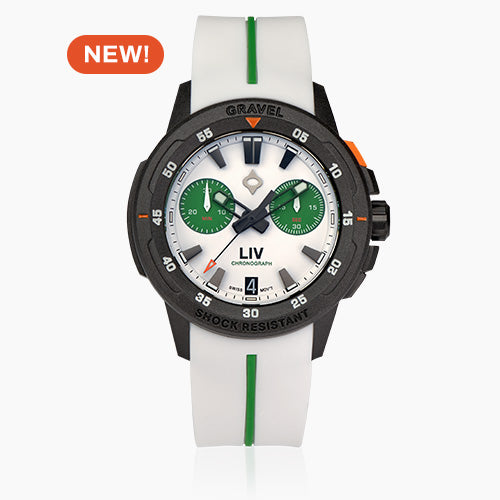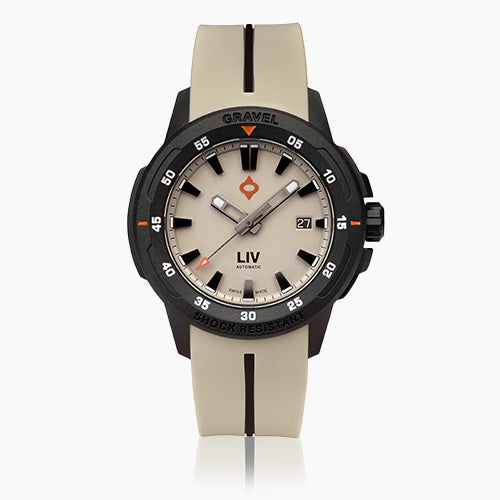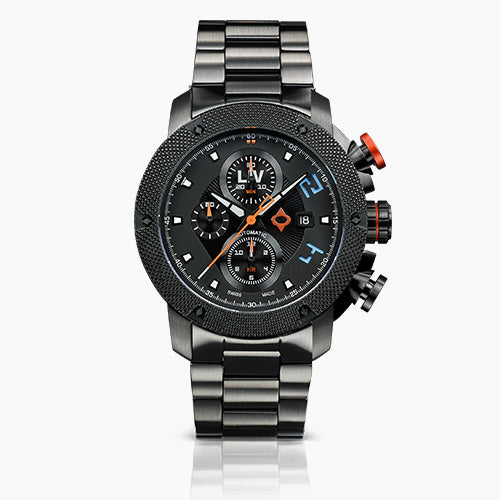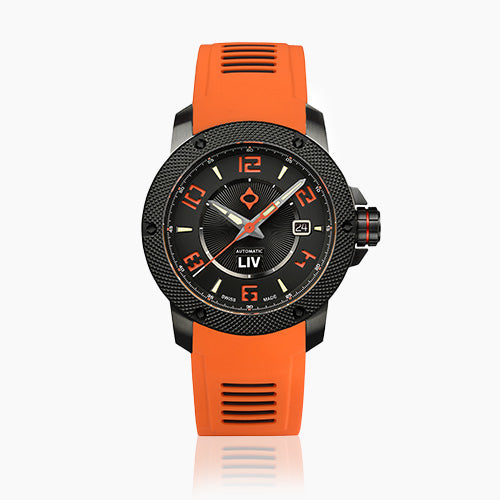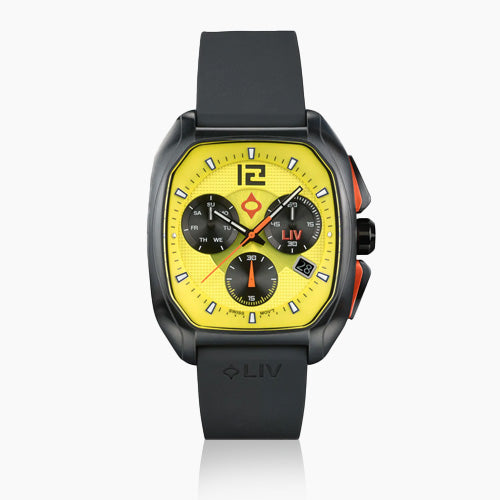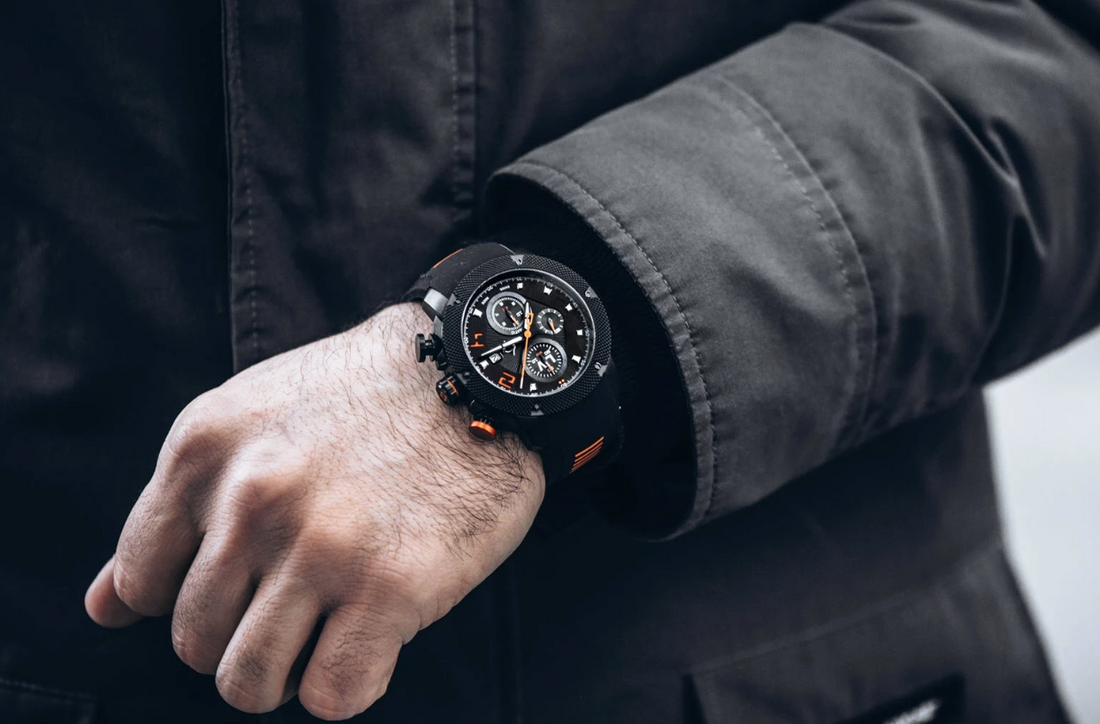
Can your automatic watch last a lifetime? (& 5 other questions worth answering)
Share
1. HOW LONG DO AUTOMATIC WATCHES LAST?
Theoretically, your automatic watch should keep forever—or certainly for many years. However, that is as long as you look after it. That’s why an appropriate sub-question should be: how do I ensure that my automatic watch lasts as long as possible?
Here are some leading tips on how to ensure that your automatic watch lasts as long as possible.
GENERAL RULE OF THUMB
The more complications your watch has, the more loving care and attention it will need in its maintenance. The reason is simple: the more complications to a watch, the more moving parts it has, most of them tiny and intricate.
- Settings: An automatic watch can be a little demanding regarding how you do its settings. Examples of this include:
- Setting the time: A good tip is to always set the time forward rather than backward, as doing the latter can damage the mainspring.
- Remember the ‘danger zone’: It’s important to know that the so-called ‘danger zone’ of a watch is between 9 p.m. and 3 a.m. Well, at least when setting the date for your watch. Why? Because it is during this period of time on your watch dial that the gears are set in motion to switch the date. The mechanism that changes the date engages the gear train at the 9 p.m. mark and only disengages after the 2 a.m. mark. A misalignment can occur during this ‘window period,’ and delicate parts of the movement can break. And remember that these are times according to what the watch reads, not the actual time where you may be.
- Always be careful: The above is true of any movement due to an incorrectly set complication. Once again, the more complications the watch has, the more one should take care with individual settings.
STORAGE
How you store your automatic watch can go a long way to preserving the intricate components found in most such watches:
- Maintain a suitable temperature: Excessive heat or extreme cold can be bad for your automatic watch. Heat is especially bad, as it can dry up or congeal the lubricant that is needed for the gears to function properly. Going from one extreme to the other can also be bad, in that it can cause parts within the watch to expand or contract. Room temperature is always preferable.
- Avoid humidity: Excessive humidity can cause water vapor to enter via the dial and cause damage to the movement or other constituent parts.
USAGE REMINDERS
There are some other essential things to remember when owning an automatic watch. These include:
- Avoid magnetic fields: For most automatic watches, especially vintage models, a magnetic field can play havoc with the escapement, which regulates the oscillations of a watch and, thus, its proper timing. Therefore, avoid putting an automatic watch on (or for a prolonged period near) any electronic devices that may have a magnetic field, including mobile phones, modems, WiFi equipment, and tablets.
2. HOW DO YOU PROPERLY WIND AN AUTOMATIC WATCH?
You would think that winding a watch would be simple enough. It is—as long as you know how to do so. Proper winding of an automatic watch is down to whether you are wearing your watch or not - and a little resistance…
- Best tip? Don’t wind your watch while wearing it. The same goes for when changing any of the settings, by the way. Why? Because winding your watch while wearing it can cause the crown to come out or dislodge accidentally. It can also cause you to wind it too much due to the strange angle one usually adopts when winding a watch one is wearing. Also, a lopsided angle when moving the crown can cause stress on the movement.
- Feel the resistance? The good thing about not wearing your watch when winding it is you are far more likely to feel the crown’s resistance. This correct action will allow you to pull out the crown at the right angle and with the right amount of (not too much) pressure.
- Number of times to wind? Turning the crown 20 to 30 times is a good rule of thumb to wind an automatic watch. And one should remember to do that when the watch is not being worn.
- Remember, it winds for you: It is called an automatic watch for a reason: as long as this watch is being worn, it should wind itself due to the oscillating movements of the wearer’s hands, arms, and body.

3. CAN YOU OVERWIND AN AUTOMATIC WATCH?
The winding mechanism of an automatic watch is less hard-wearing than that found inside its mechanical cousin, the hand-wound watch. So, excessive winding can be detrimental to an automatic watch. Don’t overdo it.

Winding an Automatic Just Right—Or Not At All
- Best advice? Let an automatic watch wind itself, if possible. It was designed precisely for that purpose.
- Not winding can also be good: An unwound automatic watch can be good for its movement as its jewels, pallets, and hairspring can have less wear and tear on them due to being in a ‘resting’ position. This one is worth remembering if one seldom wears an automatic watch or its movement has stopped working due to inactivity. However, if not worn often, investment in a quality watch winder may be a good idea.
- Don’t panic if the movement stops! For some owners of automatic watches, he flip-side of winding their watch too much is not winding it enough or forgetting altogether. Take comfort in the fact that a movement doesn’t get damaged just because it has stopped. It has simply come to rest. Set the correct time and wind the crown the correct way and number of times, and your automatic watch should work as well as before.
4. WHY DOES MY AUTOMATIC WATCH GAIN OR LOSE TIME EVERY DAY?
It is a question that can beset even the most sophisticated collector of automatic watches: why does my automatic watch gain or lose time?
EXACTLY WHY DO THEY LOSE OR GAIN TIME?
There are five main reasons why an automatic watch may be losing or gaining time:- Lubrication: The lack thereof can be highly detrimental to an automatic watch. An automatic watch is so beautiful precisely because of all its many components, some of which are minute. As with any machinery, these mechanical components require lubrication. A lack of lubrication can result in attrition between different components, which in turn means more wear and tear. This can result in a compromised main spring, which is the energy source of an automatic watch that ensures its timekeeping.
- Dirt and grime: Ditto for what tiny dirt and dust particles can do to the multiple, complex components inside an automatic watch.
- Shock: The timekeeping of an automatic watch can be compromised due to the watch having fallen, been banged, or otherwise experienced some form of shock. Excessive force or movements when using one’s arm can also cause this internal damage (think chopping wood or some other ‘severe’ arm-hand motion).
- Magnetism: As noted above, magnetic fields are not the friend of an automatic watch. The result can be a watch that runs too fast since magnetism can cause the spirals of the delicate, minuscule hairspring to ‘stick’ together. This acts to shorten (and increase) the spring’s tensile strength, thus causing the watch to run faster.
- Simple age: A vintage watch can be a uniquely beautiful timepiece. However, like all mechanical works, its gears and other components can become worn out with time. For any vintage watch, regular inspection of the movement is highly recommended, in particular, its jewels, as well as a check of the movement’s balance shaft pivots and the main spring itself.
By the way, it is worth noting that even the best of mechanical watches almost always gain or lose seconds a day—sometimes by as much as six seconds either way per day. Any automatic watch aficionado will knowingly nod their head at that.

5. WHY ARE SWISS-MADE AUTOMATIC MOVEMENTS PREFERRED?

Why are Swiss automatic movements considered to be the best? Is it snobbery based on the formidable allure of the ‘Made in Switzerland’ brand? Or is there truth to the oft-held contention that Swiss automatic movements are more complex and beautiful than, say, those from Japan?
It’s a little bit of both, to be honest.
‘MADE IN SWITZERLAND’ IS HUGELY APPEALING
There is no denying the unmistakable power of the ‘Made in Switzerland’ brand in the watch world. Swiss watchmakers have been at the forefront of innovation in watchmaking since the 1700s, and the country has undoubtedly been the watchmaking world’s leader for over 100 years.
A key factor in the ongoing allure of Swiss watchmaking and, in particular, its automatic movements, is the sheer class and depth of its watchmakers. To this day, no country compares to Switzerland in the ability of its watchmakers to craft movements of such exquisite delicacy and beauty that they can command up to millions of dollars at auction and on the high street.
There is a simple reason why Swiss movements are held in such high regard by watchmakers and collectors alike: adornment. Swiss movements are beautifully adorned, whether in the delicate hues of the gems used or the masterful way metals have been cut. Their complications also tend to be more complex and, it is said, stunning. They are miniature pieces of art.

SWITZERLAND VS. JAPAN
When comparing Swiss and Japanese movements, the Swiss are far more likely to have a significant portion of a movement be hand-made, whereas Japanese movements are generally more mechanized. That does explain why Swiss movements tend to be more costly, but should not in any way diminish Japanese movements, which are held in very high esteem by those in the know.
One can (somewhat) compare like with like by comparing the world’s two leading mechanical movement manufacturers, namely the ETA SA movement of Switzerland, and the Miyota movement from Japan. Experts agree that the Swiss movement is more stylish and complex in its construction. But both are highly respected and used by watchmakers around the world.
To be fair, the Japanese have no equals when it comes to quartz, kinetic, or solar watch technology. But where the Japanese have ruled and revolutionized the watch industry with cutting-edge technology, it’s the Swiss that have maintained their hold on crafting superb mechanical timepieces. That surely explains the enduring appeal of Swiss automatic movements.
6. ARE AUTOMATIC WATCHES LESS ACCURATE THAN QUARTZ WATCHES?
It is a debate that has raged in the watch world and among watch-lovers since the 1960s—automatic or quartz? One can thank the Japanese for that, who, with their technological prowess, took the watch world by storm more than fifty years ago with the introduction of their quartz watch technology.
It took the Swiss nearly 20 years to get on top of quartz technology, and not before the Swiss watch industry suffered a devastating loss of jobs and even prestige brands. It was the innovative Swatch brand, with its colorful, funky quartz watches, that put Switzerland firmly back at the top of watchmaking nations.
But Switzerland never lost its domain as the very pinnacle of mechanical timepieces. That is why the immense prestige of Swiss-made automatic watches continues to this day.
QUARTZ HAS ITS PLACE
There is no denying that a well-manufactured quartz movement has a host of impressive features, including its superb accuracy, not to mention durability and affordability. Although there are costly quartz watches, one can consider quartz technology the leading force for the ‘democratization’ of watches, i.e., well-made, reliable, and relatively inexpensive watches that most people can afford.
The beauty of a quartz movement is its sheer simplicity. Few moving parts, especially when compared to a mechanical watch, means these are watches that are easy to mass-produce and as easy to fix. Furthermore, the tiny, vibrating quartz crystal that powers the battery is so constant that a decent-quality quartz watch is remarkably accurate.
AN AUTOMATIC IS A THING OF BEAUTY
Where quartz watch technology exults in its simplicity and mass-affordability, automatic watchmaking is not so much technology but the art of micro-technology and craftsmanship.
Quite simply, the time and skill that goes into making an automatic watch is the principal reason why they are so beloved by so many watch lovers and collectors. There is a reason why it is automatic watches that most frequently sell for hundreds of thousands and even millions of dollars.
Automatic watches also evoke a rich history and tradition of watchmaking, not to mention their rarity relative to the far more ubiquitous quartz watches. Wealthy watch collectors yearn for this time-honored exclusivity, while others look on and aspire to it.
IN THE END…
So, which is the better watch? Quartz or automatic? Watch experts agree that the two do not deserve to be compared as they have each contributed so much to the world of watchmaking.
Purists no doubt opt for the cultural splendor and cache of automatic watches. But many savvy watch collectors are as enamored of quartz movements as are those who love automatic watches.
Ultimately, like so many things horological, whether you prefer an automatic movement or a quartz movement is simply a matter of taste.

Esti Chazanow, Co-Founder at LIV Watches
Esti's passion for men's watches led her to co-found LIV Watches—a microbrand dedicated to connecting watch collectors with high quality, limited edition, Swiss Made timepieces at prices they can afford—and the rest is horological history.


